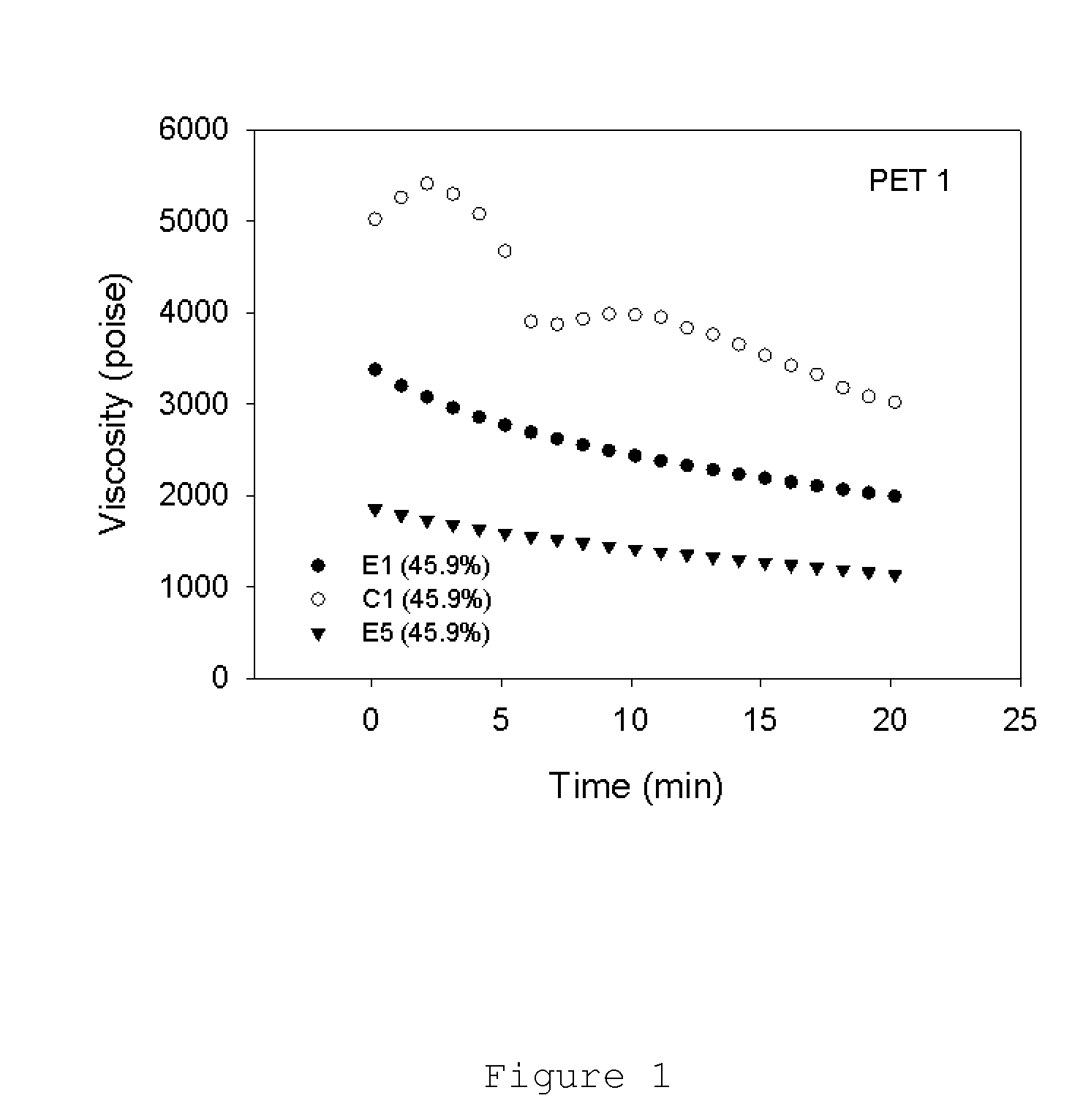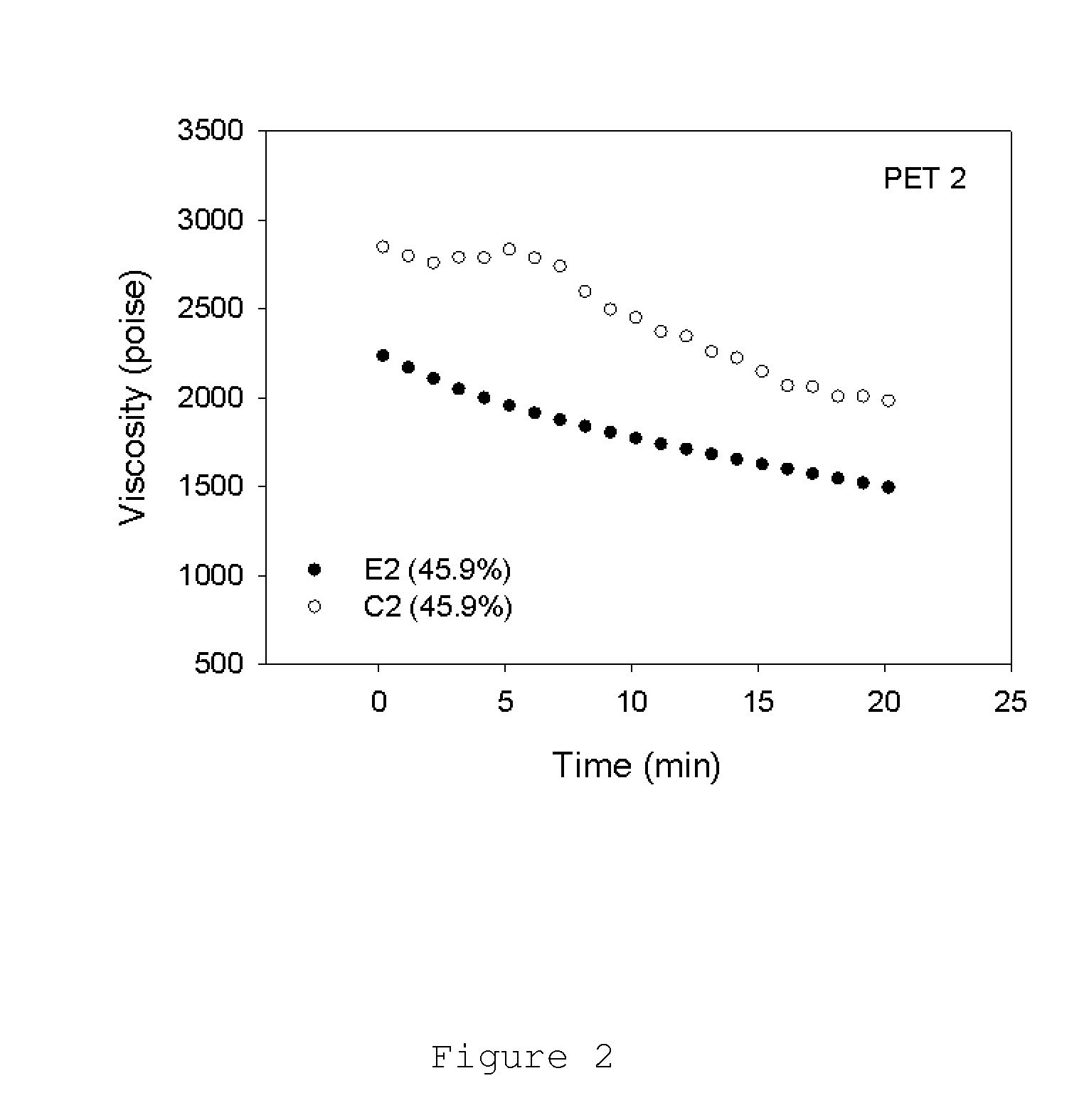Polyester blends
- Summary
- Abstract
- Description
- Claims
- Application Information
AI Technical Summary
Benefits of technology
Problems solved by technology
Method used
Image
Examples
example 1
[0349]AAC 1 and PET 1 were blended together according to the Blend Preparation Procedure described above. The amounts of AAC 1 and PET 1 in each blend are set forth in Table 1. The properties of each blend are also reported in Table 1. The measured off-gas rate of CO2 during annealing of Blend E at 300° C. is reported in Table 5.
example 2
[0350]AAC 1 and PET 2 were blended together according to the Blend Preparation Procedure described above. The amounts of AAC 1 and PET 2 in each blend are set forth in Table 2. The properties of each blend are also reported in Table 2. The measured off-gas rate of CO2 during annealing of Blend E at 300° C. is reported in Table 5.
example 3
[0351]AAC 1 and PET 3 were blended together according to the Blend Preparation Procedure described above. The amounts of AAC 1 and PET 3 in each blend are set forth in Table 3. The properties of each blend are also reported in Table 3. The measured off-gas rate of CO2 during annealing of Blend E at 300° C. is reported in Table 5.
PUM
| Property | Measurement | Unit |
|---|---|---|
| Percent by mass | aaaaa | aaaaa |
| Percent by mass | aaaaa | aaaaa |
| Percent by mass | aaaaa | aaaaa |
Abstract
Description
Claims
Application Information
 Login to View More
Login to View More - R&D
- Intellectual Property
- Life Sciences
- Materials
- Tech Scout
- Unparalleled Data Quality
- Higher Quality Content
- 60% Fewer Hallucinations
Browse by: Latest US Patents, China's latest patents, Technical Efficacy Thesaurus, Application Domain, Technology Topic, Popular Technical Reports.
© 2025 PatSnap. All rights reserved.Legal|Privacy policy|Modern Slavery Act Transparency Statement|Sitemap|About US| Contact US: help@patsnap.com



